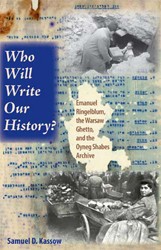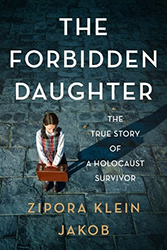By
– September 13, 2011
Perhaps it was inevitable that with the Holocaust now being acknowledged as the central historical event of the 20th century, the two major Holocaust research institutes in the world, Yad Vashem and the U.S. Holocaust Memorial Museum, would publish in the same year comprehensive encyclopedias devoted to the system of Nazi concentration camps and ghettos.
The United States Holocaust Memorial Museum Encyclopedia of the Camps and Ghettos, 1933 – 1945, Volume I is the first of seven volumes devoted to the 20,000 camps and ghettos that the Nazis and their allies operated from “Norway to North Africa and from France to Russia.” Two hundred contributors, mostly German and Austrian scholars, were recruited by the senior editors to cover three groups of camps: the “early camps that the Nazis established in the first year of Hitler’s rule,” the major SS concentration camps with their constellation of sub-camps (e.g., Auschwitz, Bergen Belsen, Mauthausen), and special camps created for Polish and German children and adolescents, many of whom were active opponents of the regime. This work will be of particular use to specialists in the fields of German and Austrian history, European labor history, and the history of World War II. While Jewish prisoners were assigned to each of the three special groups of camps, Jewish suffering and resistance are not the focus of this volume. Rather, this work seeks to address a number of fundamental questions that have long remained unanswered: “How many camps and ghettos existed? Who ran them? Who were their victims? How long were various camps in operation and for what specific purposes?”
What will be of particular interest to scholars are the comprehensive bibliographies and footnotes that accompany each of the 1,000 camps included in this work.
Unlike the U.S. Holocaust Memorial Museum’s encyclopedia, Yad Vashem’s Encyclopedia of the Ghettos During the Holocaust is an attempt to map out the 1,100 ghettos in which Jews were incarcerated “ mostly in Eastern Europe.” This work tells us about life in the Ghetto and the “various survival strategies employed by the Jewish inhabitants.” As Professors Yehuda Bauer and Israel Gutman point out in their introduction, this work seeks to provide not only a detailed account of the Nazi terror machine but also, perhaps even more importantly, a monument to the strength of the Jewish reaction.
Arranged alphabetically, the 1,140 ghettos described in this work draw upon Yad Vashem’s vast resources, including a distinguished multi-lingual staff, extensive memoirs and testimonies, rare photos from Yad Vashem’s art collection, and Yizkor bucher. While individual entries lack a specific bibliography, the editors have included a DVD containing footage recorded in the locations where ghettos existed. Unlike Volume 1 of the U.S. Holocaust Memorial Museum’s new series, the Yad Vashem work is clearly designed to assist scholars working in the fields of Holocaust Studies and Jewish history. The contributors rely heavily on Yiddish and Hebrew language sources. What sets off the Yad Vashem Encyclopedia from other similar works is its comprehensiveness. In addition to the basic facts about each ghetto, e ach ghetto entry includes ghetto structure, institutional life, Jewish leadership, killing operations, underground resistance, and the number of survivors at liberation.
The last work under review is not an encyclopedia but rather an invaluable guide to the archives of the Warsaw Ghetto. Antony Polonsky, Brandeis professor and editor- in-chief of the distinguished journal Polin, has described the “Oyneg Shabes Archives [as] perhaps the most important collection of material compiled by Jews during the Holocaust.” Organized and led by Dr. Emanuel Ringelblum, the prewar head of YIVO’s historical division in Poland, the Oyneg Shabes resistance group met for the first time inside the Warsaw Ghetto in November 1940.
For three years, the zamlers (collectors) — rabbis, Marxists, prominent leaders, and obscure volunteers — systematically documented the entire social history of the Warsaw Ghetto. Facing likely deportation, a tiny group of zamlers at Ringelblum’s direction buried the first cache of documents on August 2 – 3, 1942 in ten large metal milk cans. A second cache was buried in February, 1943. A third cache, perhaps the most important, has never been recovered in spite of repeated searches since the end of the war.
This new catalogue and guide to the Ringelblum Archives is devoted to the 35,000 pages of documents that were recovered in September, 1946 and December, 1950, which were originally catalogued by the Jewish Historical Institute in Warsaw. Professor Robert Moses Shapiro, associate professor at Brooklyn College (CUNY), spearheaded the translation of the earlier Polish catalogue, developed from 1955 to 1990, into English. Simply stated, this is an important work that should be of great assistance to scholars.
The United States Holocaust Memorial Museum Encyclopedia of the Camps and Ghettos, 1933 – 1945, Volume I is the first of seven volumes devoted to the 20,000 camps and ghettos that the Nazis and their allies operated from “Norway to North Africa and from France to Russia.” Two hundred contributors, mostly German and Austrian scholars, were recruited by the senior editors to cover three groups of camps: the “early camps that the Nazis established in the first year of Hitler’s rule,” the major SS concentration camps with their constellation of sub-camps (e.g., Auschwitz, Bergen Belsen, Mauthausen), and special camps created for Polish and German children and adolescents, many of whom were active opponents of the regime. This work will be of particular use to specialists in the fields of German and Austrian history, European labor history, and the history of World War II. While Jewish prisoners were assigned to each of the three special groups of camps, Jewish suffering and resistance are not the focus of this volume. Rather, this work seeks to address a number of fundamental questions that have long remained unanswered: “How many camps and ghettos existed? Who ran them? Who were their victims? How long were various camps in operation and for what specific purposes?”
What will be of particular interest to scholars are the comprehensive bibliographies and footnotes that accompany each of the 1,000 camps included in this work.
Unlike the U.S. Holocaust Memorial Museum’s encyclopedia, Yad Vashem’s Encyclopedia of the Ghettos During the Holocaust is an attempt to map out the 1,100 ghettos in which Jews were incarcerated “ mostly in Eastern Europe.” This work tells us about life in the Ghetto and the “various survival strategies employed by the Jewish inhabitants.” As Professors Yehuda Bauer and Israel Gutman point out in their introduction, this work seeks to provide not only a detailed account of the Nazi terror machine but also, perhaps even more importantly, a monument to the strength of the Jewish reaction.
Arranged alphabetically, the 1,140 ghettos described in this work draw upon Yad Vashem’s vast resources, including a distinguished multi-lingual staff, extensive memoirs and testimonies, rare photos from Yad Vashem’s art collection, and Yizkor bucher. While individual entries lack a specific bibliography, the editors have included a DVD containing footage recorded in the locations where ghettos existed. Unlike Volume 1 of the U.S. Holocaust Memorial Museum’s new series, the Yad Vashem work is clearly designed to assist scholars working in the fields of Holocaust Studies and Jewish history. The contributors rely heavily on Yiddish and Hebrew language sources. What sets off the Yad Vashem Encyclopedia from other similar works is its comprehensiveness. In addition to the basic facts about each ghetto, e ach ghetto entry includes ghetto structure, institutional life, Jewish leadership, killing operations, underground resistance, and the number of survivors at liberation.
The last work under review is not an encyclopedia but rather an invaluable guide to the archives of the Warsaw Ghetto. Antony Polonsky, Brandeis professor and editor- in-chief of the distinguished journal Polin, has described the “Oyneg Shabes Archives [as] perhaps the most important collection of material compiled by Jews during the Holocaust.” Organized and led by Dr. Emanuel Ringelblum, the prewar head of YIVO’s historical division in Poland, the Oyneg Shabes resistance group met for the first time inside the Warsaw Ghetto in November 1940.
For three years, the zamlers (collectors) — rabbis, Marxists, prominent leaders, and obscure volunteers — systematically documented the entire social history of the Warsaw Ghetto. Facing likely deportation, a tiny group of zamlers at Ringelblum’s direction buried the first cache of documents on August 2 – 3, 1942 in ten large metal milk cans. A second cache was buried in February, 1943. A third cache, perhaps the most important, has never been recovered in spite of repeated searches since the end of the war.
This new catalogue and guide to the Ringelblum Archives is devoted to the 35,000 pages of documents that were recovered in September, 1946 and December, 1950, which were originally catalogued by the Jewish Historical Institute in Warsaw. Professor Robert Moses Shapiro, associate professor at Brooklyn College (CUNY), spearheaded the translation of the earlier Polish catalogue, developed from 1955 to 1990, into English. Simply stated, this is an important work that should be of great assistance to scholars.
Additional books featured in this review:
Carl J. Rheins was the executive director emeritus of the YIVO Institute for Jewish Research. He received his Ph.D. in Modern European History from the State University of New York at Stony Brook and taught courses on the Holocaust at several major universities.



